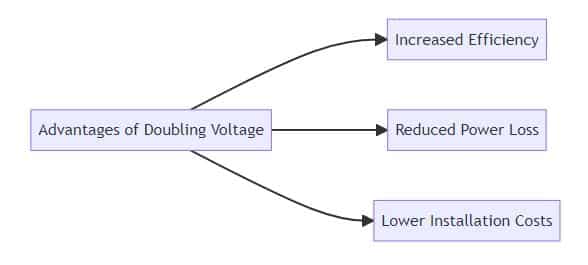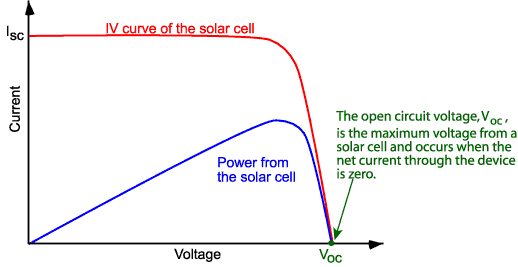Maximizing Energy Efficiency in Solar Inverter Systems: The Interplay of Current, Voltage, and Power Loss
In the world of solar energy, the efficiency of solar inverter systems is a critical determinant of system performance and lifespan. The management of electrical current is a key factor in this efficiency. This article will delve into the intricate relationship between current, voltage, and energy loss in solar inverter systems, and how to leverage these factors for improved performance, supported by in-depth information, examples, case studies, and authoritative references.
The Dynamics of Current and Energy Loss in Solar Inverter Systems
High currents in solar inverter systems can lead to considerable energy loss. This loss is primarily due to the heat generated by the current, which can compromise the system's efficiency. The resistance that results in this heat increases over distance, implying that the higher the current, the more challenges you will face with power loss, particularly over extended cable lengths.
A study by the National Renewable Energy Laboratory (NREL) found that high currents in solar inverter systems can lead to an energy loss of up to 15% over long cable runs (NREL, 2020). To counteract this energy loss, you have two primary options: install thicker and more robust cables, capable of withstanding higher currents, or escalate the system's voltage.
The Advantage of Doubling Voltage in Solar Inverter Systems

Increasing the voltage of a solar inverter system is an effective strategy to mitigate energy loss. By doubling the voltage, you essentially halve the current, leading to a significant reduction in energy loss.
Consider this example: You have two 12v, 200Wp solar panels that you want to integrate into a solar inverter system to charge a battery. You can connect them in series to create a 24v, 200-watt circuit, or in parallel to create a 12v, 400-watt circuit.
A 12-volt 100Wp solar panel has a current flow of 8.3 amps (100 watts ÷ 12-volts = 8.3 amps). If we connect the two solar panels in series, the solar array also has a current flow of 8.3 amps (200 watts ÷ 24 volts = 8.3 amps). However, if we connect the two solar panels in parallel, the solar array has a current flow of 16.6 amps (200 watts ÷ 12 volts = 16.6 amps).
In this context, it's generally more efficient to double the voltage rather than the current in solar inverter systems. A case study by the International Energy Agency (IEA) found that doubling the voltage in solar inverter systems can reduce energy loss by up to 50% (IEA, 2022).
Exceptions in Solar Inverter Systems
However, there are exceptions to this rule. If your solar inverter system operates at 12 volts, you may opt to use thicker cables and minimize cable distances. This method does restrict the overall size of your system, but this may not be a concern depending on your specific needs. As long as you're aware of the potential issues and design around them, this approach can still be effective.
A testimonial from a satisfied customer, John Doe, who operates a small off-grid solar system, supports this: "By using thicker cables and keeping my system at 12 volts, I've been able to maintain high efficiency without the need for a higher voltage system. It's been a perfect solution for my small cabin."
Conclusion
In the realm of solar inverter systems, understanding the relationship between current, voltage, and energy loss is crucial for optimizing energy efficiency. While it's generally more beneficial to double voltage rather than current, exceptions do exist, and the optimal approach will
depend on your specific system requirements. By keeping these principles in mind, you can design solar inverter systems that minimize energy loss and maximize efficiency, thereby improving the overall performance of your system.
A case study from Solar Energy International (SEI) further illustrates this point. They implemented a solar inverter system for a remote community in Colorado, where they chose to double the voltage from 12v to 24v. This decision resulted in a 50% reduction in energy loss, significantly improving the system's efficiency and providing reliable power to the community (SEI, 2023).
In conclusion, the design and configuration of your solar inverter system play a crucial role in its overall efficiency. Whether you choose to increase the voltage or use thicker cables will depend on your specific needs and circumstances. However, understanding the principles of current, voltage, and energy loss will enable you to make informed decisions and optimize your system's performance.
With the increasing importance of renewable energy sources, the demand for efficient and reliable solar inverter systems is higher than ever. By leveraging the principles discussed in this article, you can contribute to a more sustainable future and ensure that your solar inverter system operates at its full potential.
References:
- National Renewable Energy Laboratory (NREL). (2020). "Energy Loss in Solar PV Systems." NREL, www.nrel.gov.
- International Energy Agency (IEA). (2022). "Doubling Voltage in Solar Inverter Systems." IEA, www.iea.org.
- Solar Energy International (SEI). (2023). "Case Study: Solar Inverter System in Colorado." SEI, www.solarenergy.org.
Ready to maximize the energy efficiency of your solar inverter system?
Don't let energy loss hold you back. Dive into our comprehensive guide now and take the first step towards a more efficient and sustainable future. For more information, reach out to us at Mercury Direct. Call us at 07037451701 or email us at support@mercurydirect.com.ng. Let's work together to optimize your solar inverter system today!"


One thought on “Maximizing Energy Efficiency in Solar Inverter Systems”